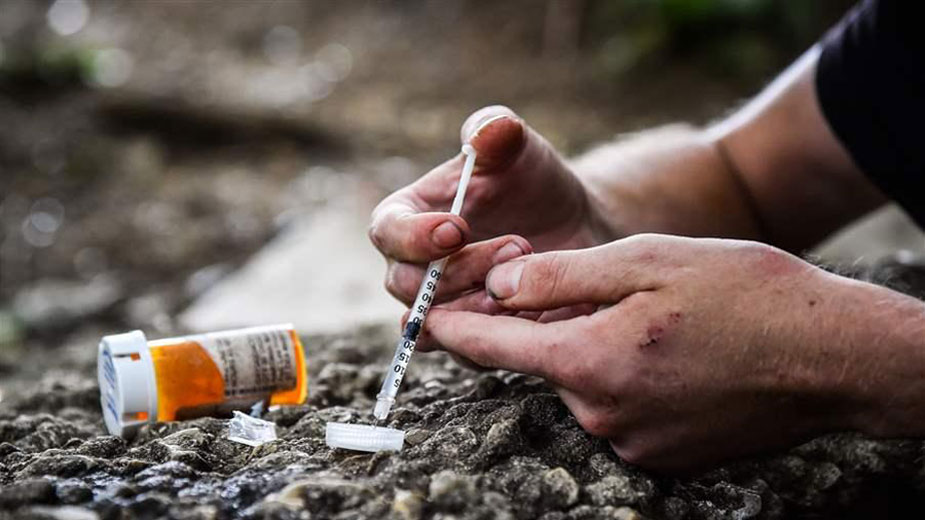Ohio Initiative Gets $65M to Study How to Reduce Overdose Deaths by 40%
COLUMBUS, Ohio – Through a newly awarded $65.9 million federal research grant to address the opioid epidemic, The Ohio State University will lead a consortium of academic, state and community partners that aims to reduce overdose deaths by 40% over three years.The new Ohio initiative, announced today as part of the federal HEALing Communities Study, will use real-time research to focus prevention, treatment and recovery programs in the state, which has been hit especially hard by opioid deaths. The study will focus efforts in 19 Ohio counties.
“This initiative will advance the most effective solutions to the opioid crisis and bring them to scale quickly,” said Ohio State President Michael V. Drake. “We are committed to doing everything we can to end this public health crisis in our state and, through our example, beyond.”
The 19 Ohio counties were selected at random and represent a cross-section of urban and rural communities, according to published reports. They are Allen, Ashtabula, Athens, Brown, Cuyahoga, Darke, Franklin, Guernsey, Greene, Hamilton, Huron, Jefferson, Lucas, Morrow, Ross, Scioto, Stark, Williams and Wyandot.
Health and Human Services Secretary Alex M. Azar II announced the Ohio grant today as part of more than $350 million committed to the HEALing Communities Study. The study is funded and supported by the National Institute on Drug Abuse, part of the National Institutes of Health, in partnership with the Substance Abuse and Mental Health Services Administration.
The Ohio consortium brings together experts from six universities — Ohio State, University of Cincinnati, Case Western Reserve University, Ohio University, University of Toledo and Wright State University — and leaders from state agencies and community organizations.
“By applying evidence-based interventions, this initiative will save lives in Ohio communities and serve as a model for communities across the nation,” said lead investigator Dr. Rebecca Jackson, director of Ohio State’s Center for Clinical and Translational Science and associate dean for clinical research in the College of Medicine.
The administration of Gov. Mike DeWine is also part of the research consortium. After taking office in January, DeWine created the RecoveryOhio initiative to improve prevention, treatment and recovery support efforts that address mental health and substance use.
“By participating in the HEALing Communities Study, Ohio can expand its efforts to address the substance use crisis that is taking a toll on families across the state in a comprehensive, collaborative way,” said Ohio Gov. Mike DeWine. “The study joins my RecoveryOhio initiative with several of our state’s universities to improve and evaluate our state’s community-level infrastructure with the goal of reducing overdose deaths, encouraging treatment and supporting recovery for all Ohioans.”
The state’s proposal was supported by the entire Ohio congressional delegation, led by Sens. Sherrod Brown and Rob Portman and Reps. Steve Stivers, Joyce Beatty and Troy Balderson.
In 2017, 4,293 Ohioans died from opioid-related overdoses, according to the Centers for Disease Control and Prevention. With that toll, Ohio experienced 39.2 opioid-related overdose deaths per 100,000 people, a rate that is second only to West Virginia.
The Ohio coalition will work to implement evidence-based prevention and treatment interventions across a wide range of settings — including primary care, behavioral health and criminal justice — to provide stakeholders on the front lines of the opioid crisis with real-time, actionable information about the most effective approaches.
In total, more than three dozen Ohio State faculty members are participating in the initiative. They represent the colleges of Medicine, Pharmacy, Public Health, Public Affairs, Social Work, Nursing, Education and Human Ecology, Engineering, Arts and Sciences, and Food, Agricultural and Environmental Sciences. The Wexner Medical Center and Ohio State Extension are also involved in the initiative.
“Opioid use and abuse stem from a complicated set of factors,” said Executive Vice President and Provost Bruce A. McPheron. “Ohio State is bringing our full capabilities as a comprehensive research institution to bear on this critical issue.”
Copyright 2024 The Business Journal, Youngstown, Ohio.



